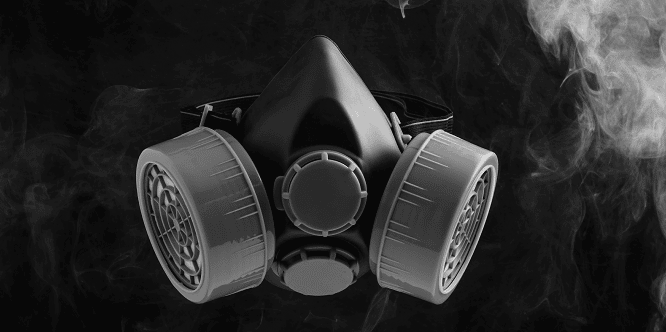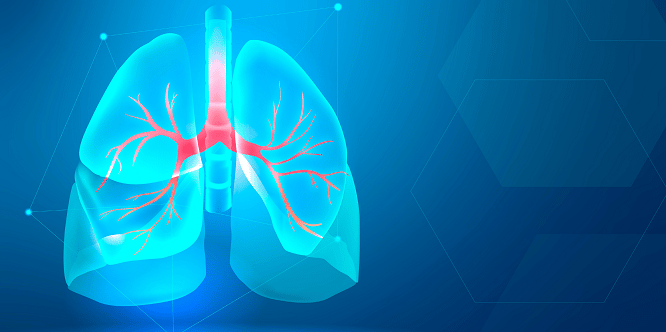TAKEAWAY: Respiratory Protection is among the top 3 safety violations released by OSHA in 2022. Here’s how you can help mitigate future risks!
Jump Ahead
The Occupational Safety and Health Administration (OSHA) recently released its top 10 list of safety violations for 2022. Respiratory Protection comes in at number 3, with 2,185 violations. Safety violations put workers at risk of injury or death, so areas such as respiratory protection should be a crucial part of workplace health and safety programs.
What are the Top Workplace Safety Violations for 2022?
Fall Protection – General Requirements tops the OSHA Workplace Safety Violations list for the 12th year running, with 5,424 violations. Hazard Communication is second, with Respiratory Protection third.
The other violations rounding out the top 10 list are Ladders, Scaffolding, Lockout/Tagout, Powered Industrial Trucks, Fall Protection – Training Requirements, Personal Protective and Lifesaving Equipment: Eye and Face Protection, and Machine Guarding.
These violations apply to construction and general industry jobs. Although the statistics are U.S. based, they can offer vital insights for employers globally.
The same violations continue to show up year after year despite advances in workplace safety. While a violation’s position on the top 10 list may change, it’s evident that the overall focus areas remain the same.
2 primary reasons Respiratory Protection remains a top workplace safety violation include not having a written respiratory protection program and the lack of fit testing.
OSHA’s Respiratory Protection Standard
OSHA has developed various standards, also called “rules,” describing ways employers should protect employees from workplace hazards. These rules help guide employers through crucial health and safety issues, enabling them to make the best decisions on improving worker health and safety.
The OSHA rule for Respiratory Protection aims to protect workers from respiratory issues that can occur when they breathe in contaminants from dust, fogs, fumes, mists, gases, smoke, sprays, or vapours. Employers must use methods such as confinement of the operation, adequate ventilation, and selecting low-toxicity materials to help protect employees.
A suitable respirator is also necessary for many situations and, alongside this, an appropriate written Respiratory Protection Program. The program must include details of required respirator use and worksite-specific procedures.
OSHA’s rule also specifies how to select, use, maintain, store, and inspect a respirator to ensure its effectiveness. Additionally, it highlights the importance of respirator training and fit testing for employees who use them.
OSHA’s Respiratory Protection rule covers the areas identified as problems linked with workplace safety violations (the lack of fit testing and respiratory protection programs). Therefore, these should be two core focus areas for employers to reduce the incidence of respiratory protection safety violations.
What’s Involved in a Respiratory Protection Program?
Mining, manufacturing, construction, and agriculture are among the most at-risk industries for lung health issues. Employers in high-risk sectors should implement a respiratory protection program to identify potential lung-health problems in employees and develop a course of action to protect workers’ health.
Respiratory protection programs are also known as Lung Health Testing and Monitoring Programs. Lung health programs offer training and treatment solutions focused on improving lung health and could include various topics. Services can include chest x-rays, respirator fit testing, questionnaires, and spirometry testing.
Spirometry testing is also known as Pulmonary Lung Function testing and is the most common method of lung function testing. Its goal is to help employers manage the risks of lung damage in the workplace.
Employers should establish a Respiratory Protection Program that includes baseline and periodic testing. Baseline tests can be carried out during pre-employment to identify any pre-existing lung health conditions that may impact workers’ ability to fulfill their job obligations.
The information employers receive from baseline tests helps them accommodate a worker’s lung function limitations. Employers can compare periodic test results with baseline tests to measure changes in worker lung health over time. Respiratory Health Surveillance is a program that assesses and monitors lung functionality, focusing on work-related respiratory diseases.
What Types of Respirator Fit Testing are Available?
Respirators are one type of Personal Protective Equipment (PPE) that can help keep workers safe and healthy. Respirators help prevent the inhalation of dangerous substances and the development of respiratory illnesses. An employee’s respirator must be the right fit for them, and that’s where Respirator Fit Testing comes in.
Quantitative and qualitative are the two types of Respirator Fit Testing.
Quantitative Respirator Fit Testing is also known as Mask Fit Testing. It uses an instrument to measure particle concentration in the ambient air and compare it with those that leak into the respirator. It is considered the gold standard in Respirator Fit Testing.
Qualitative Respirator Fit Testing is a subjective measurement that relies on the mask wearer to detect leaks. The worker puts on the respirator, and the tester exposes them to one or more airborne contaminants. Test results are obtained based on whether the worker reacts to the substance, for example, through smell or taste.
The Canadian Standards Association (CSA) requires employers to facilitate Respirator Fit Testing once every two years. However, it’s essential to stay current with provincial requirements, as they may differ. Employers should also understand what organizations are integral to Respirator Fit Testing (CSA, OSHA, and NIOSH) and what role each one plays.

BOOK RESPIRATOR FIT TESTING TODAY!
You are responsible for ensuring your employees have the appropriate fitting Personal Protective Equipment (PPE) for the work environment and could be found liable if an employee is injured on the job.
We can help you mitigate risk. Book respirator fit testing today!
The Importance of Respiratory Protection | In Conclusion
Lung Health Monitoring Programs that include Respirator Fit Testing are crucial components for helping employers manage the risk of workplace injury, illness, and fatality. Many industries and specific job roles expose workers to potentially dangerous contaminants from vapours, gases, fumes, mist, and dust that can adversely affect their respiratory health. Employers must take the necessary steps to protect their workers’ respiratory health.
A written Respiratory Protection Program offers a documented framework that helps employers and employees comply with the necessary standards and procedures for protecting respiratory health. It helps facilitate awareness of existing hazards and how to control them. Respirator Fit Testing is a vital part of this program that enforces the appropriate selection, use, and maintenance of respirators.
Respiratory Protection is a significant workplace safety violation, appearing in OSHA data year after year. The good news is that employers can play an essential role in improving this issue.
Lung Health Monitoring Programs are one of several areas for consideration in a health and safety-focused organization. Others include Audiometric Testing and Drug and Alcohol Testing.
You May Also Be Interested In…
- Do You Have Reasonable Suspicion?
 Employers cannot initiate reasonable suspicion testing without first going through the 5-step process. Reasonable suspicion training provides critical information about how to initiate reasonable suspicion testing, including the 5-step process and other tools that employers can use to help manage the misuse of alcohol and drugs in the workplace.
Employers cannot initiate reasonable suspicion testing without first going through the 5-step process. Reasonable suspicion training provides critical information about how to initiate reasonable suspicion testing, including the 5-step process and other tools that employers can use to help manage the misuse of alcohol and drugs in the workplace. - An Employer’s Guide: What You and Your Employees Need to Know About DOT Drug & Alcohol Testing
 When implementing or maintaining DOT Drug & Alcohol testing, there are key areas that employers should consider.
When implementing or maintaining DOT Drug & Alcohol testing, there are key areas that employers should consider. - SureHire Occupational Testing Acquires COHR Health: A Positive Step Towards Safe, Healthy, Productive Workforces and Communities
 We are thrilled to announce that today, May 6, 2024, SureHire Occupational Testing has officially acquired COHR Health, a well-known leader in occupational health services. Read on…
We are thrilled to announce that today, May 6, 2024, SureHire Occupational Testing has officially acquired COHR Health, a well-known leader in occupational health services. Read on… - Occupational Testing Use Case – Mining
 In this case study, we will explore how mining companies can use various types of occupational tests to reduce Total Recordable Incident Rates (TRIR) long term.
In this case study, we will explore how mining companies can use various types of occupational tests to reduce Total Recordable Incident Rates (TRIR) long term. - 9 Strategies to Keep Workers Cool on Drilling Sites During Hot Summer Months
 This article delves into strategies to keep workers cool and safe on drilling sites during the hot summer months.
This article delves into strategies to keep workers cool and safe on drilling sites during the hot summer months. - Hearing Conservation Basics: How to Manage Occupational Noise
 Learn how to proactively mitigate occupational noise risks and help prevent NIHL among workers.
Learn how to proactively mitigate occupational noise risks and help prevent NIHL among workers.

